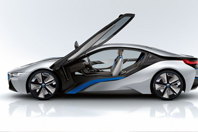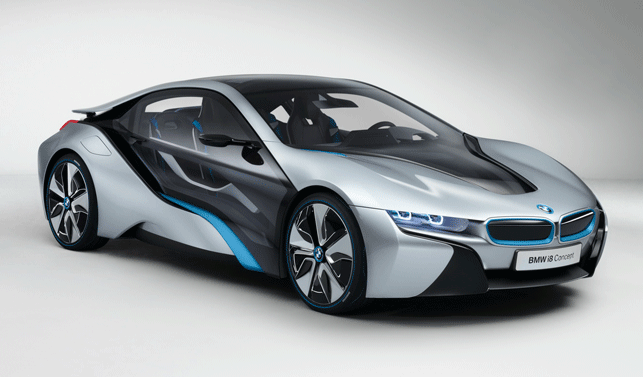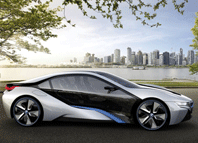Amy Rowell of Four Winds Research, asks: “what’s driving design for a more sustainable future?” and requests your help.

The BMW i8 – BMW’s fuel efficient, sustainability-driven BMW i8 concept sportscar represents “benchmark efficiency in a plug-in hybrid electric vehicle,” according to the company.
Will sustainability usher in the next “Golden Era of Design?” It seems that industrial designer Yves Béhar believes it will. In a New York Times interview, he offered this view:
Sustainability calls for a complete overhaul of every sector of production… There’s not been a similar opportunity since the end of WW2 and industry transforming from military to consumer.
Is Béhar’s thinking too radical? Is it too much to imagine that in the next decade, we can expect to see dramatic changes in the way that products are conceived and designed, manufactured and delivered? Will manufacturing, by design, be less wasteful and more environmentally-friendly? Will products increasingly be more energy-efficient, and be characterized by more responsible use/reuse of materials?
In general: will products be designed with more than “faster, better, cheaper” metrics in mind? In the coming decade, will the impact of design decisions extend beyond financial (price/performance) considerations and increasingly be paired with – environmental and social concerns?
Perhaps the best way to respond to this question is to point to a number of recent developments that promise to pave the way to more sustainable design and manufacturing:
In fact, Ulrich and Eppinger’s classic college textbook, Product Design and Development has already begun to reflect this change and now includes a new chapter on Design for the Environment, addressing topics like eco-friendly materials selection, product lifecycle assessment and more. (See Figure 1. The BMW i8 concept car – a plug-in hybrid.)
Sustainability is taking on a new and important role – new modules are being developed to simplify the sustainable design process, and new tools to aid in such tasks as materials selection, “up-front” LCA (lifecycle assessment), and carbon/water impact analysis are being introduced.
Do you agree? Disagree? Tell us more. By taking this short survey, you’ll be helping to shed light on this very important – and often highly debated – topic. Whether you’re a sustainability expert or just beginning your journey – your feedback is invaluable.
It’s all part of next-generation product design, a topic that is explored in greater detail in our upcoming research study, “Sustainability and the Product Lifecycle: A Report on the Opportunities, Challenges and Best Practices for Sustainable Product Design and Manufacturing.”
About the Author: Amy Rowell runs Four Winds Research. It is focused on identifying the key issues and challenges facing designers and engineers today as they attempt to create sustainable products; understanding how organizations can effectively apply sustainability principles in product design and development both internally and across the supply chain; and the critical role that sustainability metrics, tools, and technologies promise to play in product design and manufacturing in the coming decade.
Amy Rowell, asks: ‘what’s driving design for a sustainable future?’ and seeks your help
No
Default








